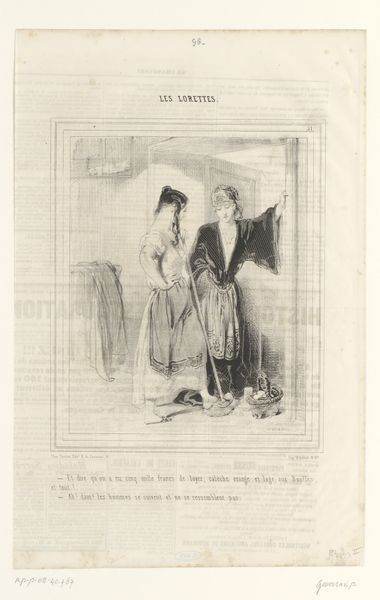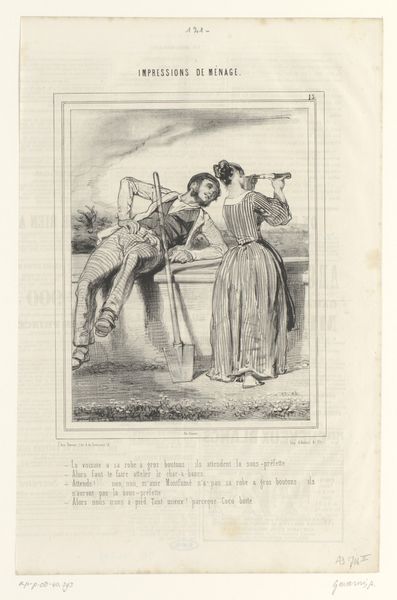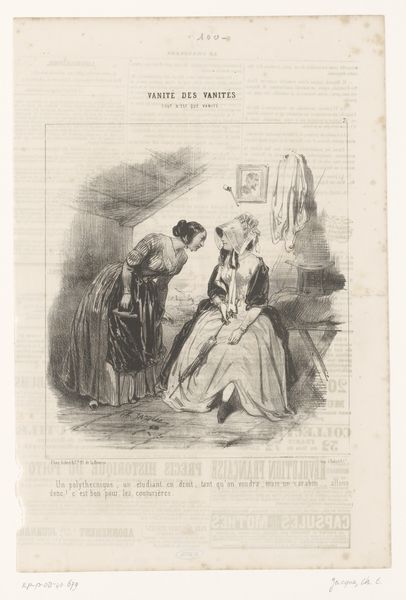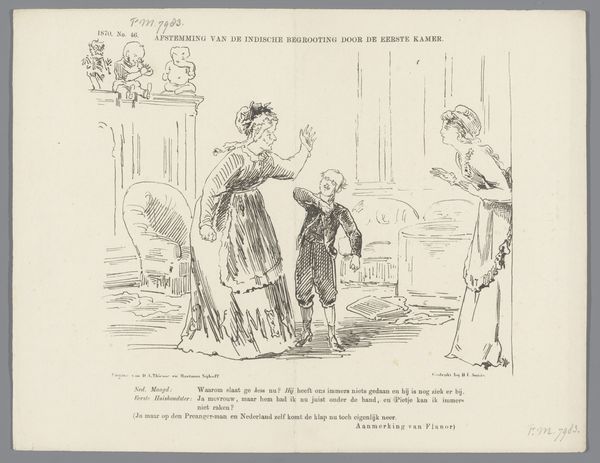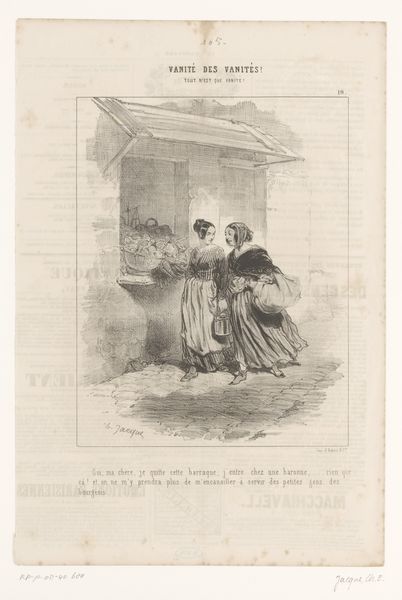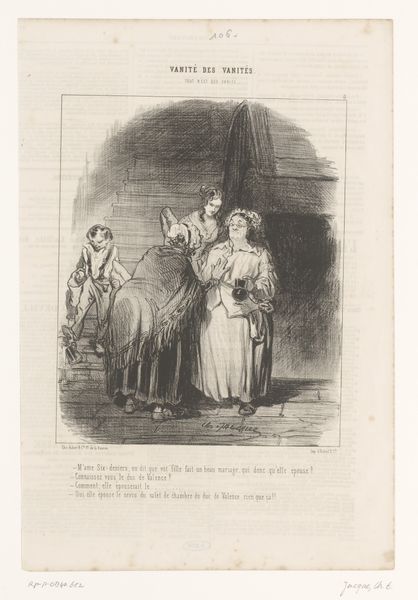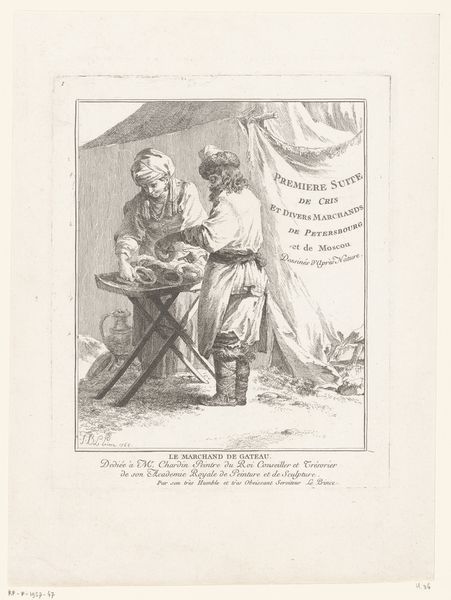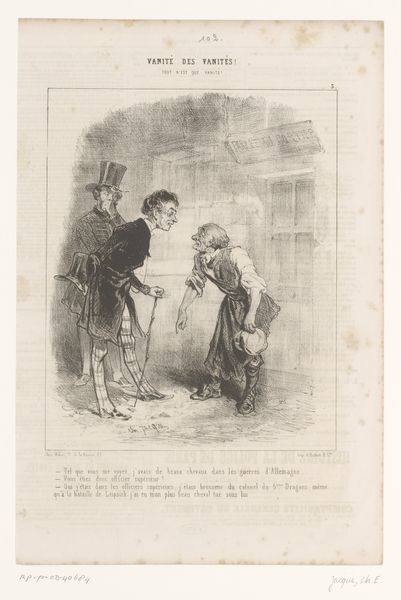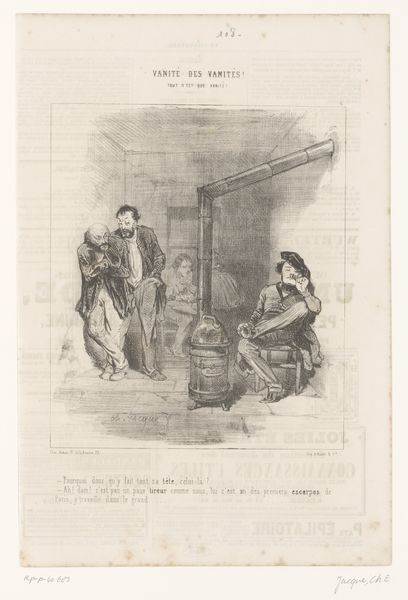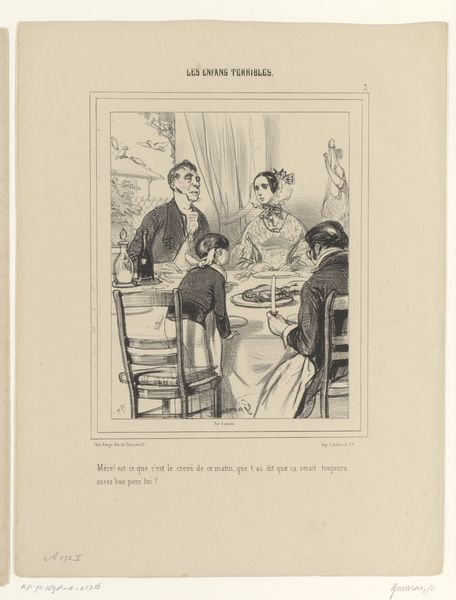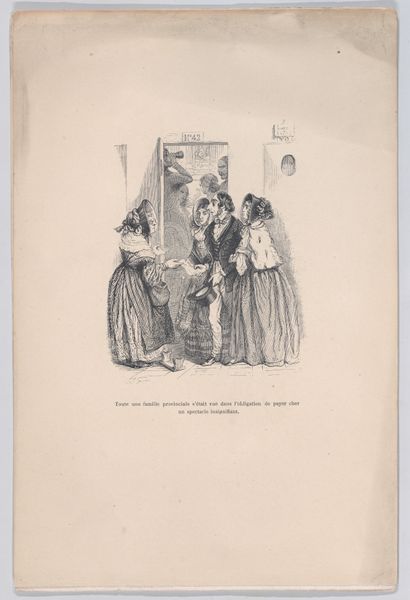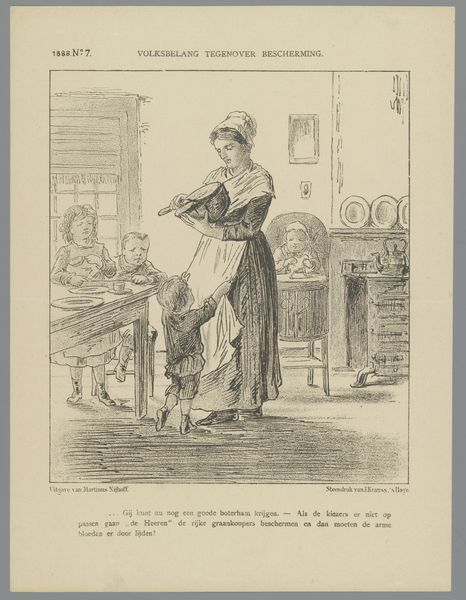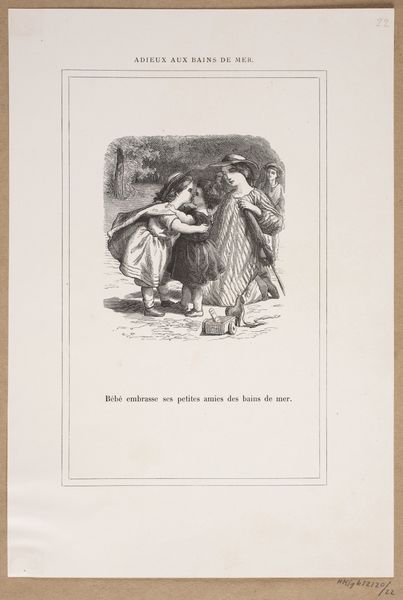
drawing, lithograph, pen
#
drawing
#
narrative-art
#
lithograph
#
pencil sketch
#
figuration
#
romanticism
#
pen
#
genre-painting
Dimensions: height 363 mm, width 246 mm
Copyright: Rijks Museum: Open Domain
Curator: Here, we have a lithograph and pen drawing by Charles Jacque from 1843 titled "Moeder doet de was en dochter kleedt zich aan," which translates to "Mother does the laundry and daughter dresses." Editor: Immediately, I see this incredible juxtaposition of domestic labor and burgeoning womanhood, all rendered with a sensitive, almost melancholy tone. The contrast in textures, the rough laundry versus the daughter's smooth dress, feels incredibly symbolic. Curator: Indeed. Jacque presents us with a scene laden with implications about gender roles and social mobility. The mother, immersed in the drudgery of laundry, embodies traditional expectations of women, whereas the daughter’s act of dressing suggests an entry into society, perhaps aspirations beyond the domestic sphere. We should contextualize this image within 19th-century societal pressures. Editor: I am also struck by how Jacque employs visual cues to create a certain narrative tension. The washtub, placed so prominently in the foreground, seems to serve as a symbol of labor but also constraint, keeping the mother earthbound. Is the daughter a vision of the future? Curator: The daughter’s posture, caught between looking back and stepping forward, embodies the liminal space between traditional roles and emergent identities. Consider the inscription, "Vanity of Vanities!" Its context deepens the visual narrative by questioning the true worth and substance of both these lives. Is personal growth an achievement, or just pointless pride? The answer seems to be… ambivalent. Editor: To your point, this print is about cultural memory, capturing anxieties about evolving feminine roles and economic disparities through carefully placed symbols. Even the curtained background provides a hint that societal constructs will impact them, not domestic activity alone. Curator: This examination really showcases art's function as a historical record, a tool to investigate the intricate connection between art, gender, and society during a period of great change. I can only admire how efficiently Jacque's lithograph achieves its objectives. Editor: For me, tracing this through visual markers connects the 19th-century interior with ongoing dialogue surrounding women and self-expression.
Comments
No comments
Be the first to comment and join the conversation on the ultimate creative platform.
